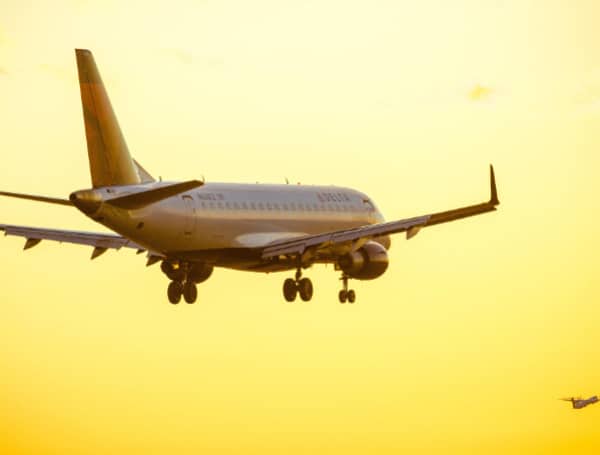A U.S. Army Black Hawk helicopter flying through restricted Washington, D.C. airspace on Thursday triggered urgent evasive maneuvers by two commercial jets inbound to Reagan National Airport, highlighting persistent concerns about military-civilian air traffic coordination just months after a fatal collision near the same location.
The incident occurred when the Army chopper deviated from its approved flight path, veering around the Pentagon instead of heading directly to the helipad, according to a Friday email from Federal Aviation Administration (FAA) Assistant Administrator Chris Senn.
READ: Vice President JD Vance Offers Surprising Answer When Asked Who Currently Leads Democrats
This unexpected turn prompted air traffic controllers to order immediate go-arounds for a Delta Air Lines flight and a Republic Airways flight that were already on final approach to Reagan National Airport (DCA). While go-arounds are not uncommon at the busy airport, the FAA classified Thursday’s event as a “loss of separation,” a serious breach of federal air traffic safety standards indicating aircraft came too close.
Politico reported that the two civilian aircraft were brought dangerously close to the helicopter, less than a mile and 400 feet in one case, and just 0.4 miles and 200 feet in the other.
Compounding the potential danger, the helicopter’s radar track temporarily glitched on controllers’ screens, momentarily delaying their ability to monitor its exact position. Despite this, the Reagan control tower was fully staffed during the incident, including a supervisor, four certified professional controllers, and a trainee.
READ :Texas Enacts Sweeping School Choice Program As Governor Greg Abbott Signs Landmark Bill
Thursday’s close call occurred just four months after a tragic incident on January 29, when an American Airlines jet collided with a military Black Hawk helicopter near Reagan National, killing all 67 people aboard both aircraft. The fatal crash raised significant questions about gaps in military-civilian airspace coordination, particularly regarding inconsistent use of tracking technology. Investigators in the January crash suspect the military Black Hawk’s ADS-B tracking system was switched off.
In contrast, the Army Black Hawk involved in Thursday’s incident was transmitting data via its ADS-B system. However, the temporary radar glitch still underscores potential monitoring challenges.
READ: Arrest Made In Florida Homicide After Child Found Wandering Covered In Blood
The January disaster highlighted issues such as a U.S. Army pilot failing to change course and potentially missing air traffic instructions due to overlapping radio transmissions. Reagan National Airport has seen several incidents recently, including one in April when a plane clipped the wing of another aircraft carrying two U.S. representatives.
FAA officials have announced that an investigation is underway to determine whether the Army violated any flight protocols during Thursday’s incident. The National Transportation Safety Board (NTSB) is also reviewing the event, adding another layer of scrutiny to military operations within highly sensitive civilian airspace. The close call is expected to intensify ongoing discussions about improving communication and tracking protocols between military and civilian air traffic control.
Please make a small donation to the Tampa Free Press to help sustain independent journalism. Your contribution enables us to continue delivering high-quality, local, and national news coverage.
Connect with us: Follow the Tampa Free Press on Facebook and Twitter for breaking news and updates.
Sign up: Subscribe to our free newsletter for a curated selection of top stories delivered straight to your inbox.

